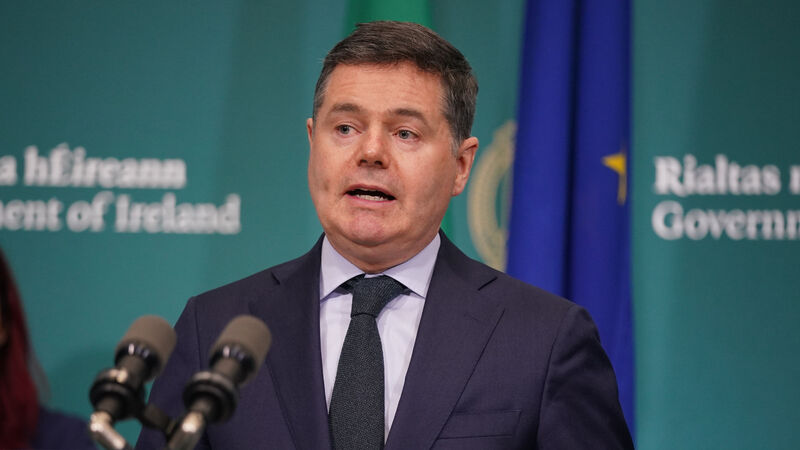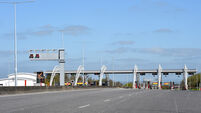Oliver Mangan: Irish economy certainly not experiencing stagflation

Finance Minister Paschal Donohoe: The Department of Finance is projecting growth of 4.2% for the domestic economy and 6.4% in GDP.
The Irish economy has come through the Covid-19 crisis in good shape, with the very substantial fiscal supports amounting to around 20% of national income having played a key role in limiting the damage to the economy.
Ireland has also benefitted from the favourable product mix in its large multinational sector, with a large presence of pharma, medical, technology, and financial services companies, which have seen very strong export growth over the past two years.
The strength of the economy last year is best exemplified by data on tax receipts and the labour market.
Tax revenues in 2021 were up by 15% on 2019 levels, the year before the pandemic struck.
Meanwhile, employment was up by 6.3% in the final quarter of last year on the same period in 2019.
The official unemployment rate stood at 5.1% at the end of 2021, just slightly higher than its end-2019 level, of 4.8%.
The economy has enjoyed a strong start to this year.
The purchasing managers' indices for the opening months of the year have remained firm for the services, manufacturing, and construction sectors.
The 12-month rolling exchequer deficit had fallen to just €3bn by March, down from €14bn a year earlier.
Updated macro forecasts on the Irish economy that have been published recently by the Economic and Social Research Institute (ESRI), the Central Bank, and the Department of Finance take account of the impact of the war in Ukraine, especially on inflation.
While the growth forecasts have been scaled back, the economy is still expected to expand strongly in 2022 given the ongoing recovery in the global economy, the scope for a rundown of household savings, and the prospect for economic activity continuing to rebound from the Covid-19 pandemic.
The Central Bank forecasts growth of 4.8% in underlying domestic demand and for growth of 5.5% for GDP in 2022.
The ESRI forecasts expansion of 5% and 6.2%, respectively, for both aggregates.
The Department of Finance is projecting growth of 4.2% for the domestic economy and 6.4% in GDP.
Growth is expected to moderate somewhat in 2023 and beyond, in line with the global trend and as macroeconomic policy turns less stimulatory.
The Central Bank sees growth of 4.3% in the domestic economy and 5.5% in GDP in 2023, while the ESRI and Department of Finance are forecasting growth of 4% to 4.5% for both.
The Central Bank is looking for an increase of 4% in domestic demand in 2024 and stronger growth again in GDP.
The Department of Finance forecasts a 4% increase in GDP for 2024.
As in other parts of the world, Irish inflation has risen sharply.
The harmonised consumer inflation rate climbed to 6.9% in March from 5.7% in February.
Excluding energy products, March inflation was running at 3.7%.
Inflation should fall steadily from the third quarter onwards as steep energy price increases, in particular, drop out of the annual rate.
There is disagreement, though, over the extent of the fall.
The Central Bank is expecting inflation to fall sharply and average 2.8% in 2023 and then 2.1% in 2024.
The Department of Finance sees inflation of 3% and 2.2% for the two years.
However, the ESRI projects inflation will stay quite high next year, averaging 5%.
Overall, despite the major energy price shock, the Irish economy is certainly not experiencing stagflation, with both the real economy and prices showing rapid growth.
- Oliver Mangan is chief economist at AIB














